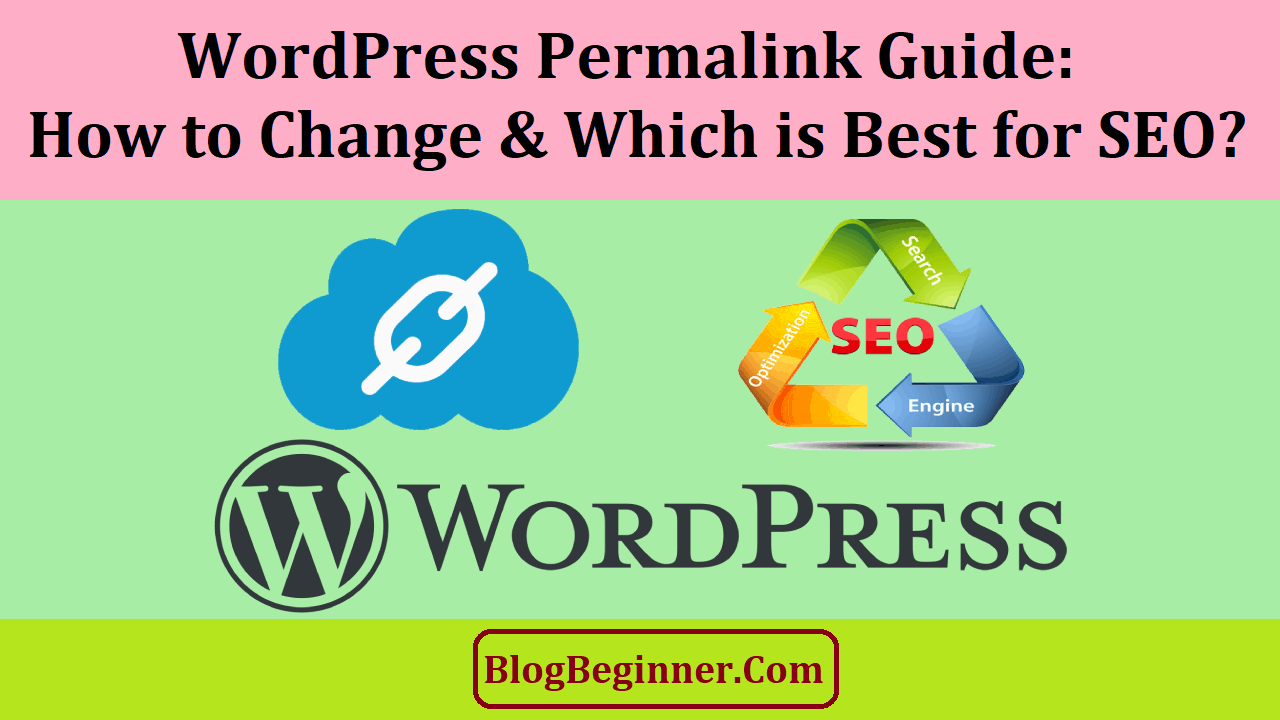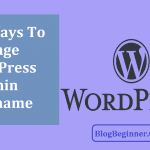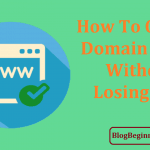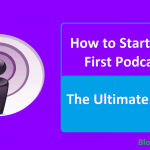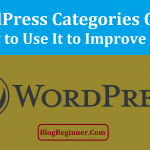Blogs and websites are created as outlets of information, creativity, and imagination.
They are here to educate and entertain people across the Internet.
This commitment to making people as informed and entertained as possible – and the monetary gains that come as a bonus – has led several WordPress-built websites to think of ways how to increase their visibility in the large world of the Internet.
SEO, or Search Engine Optimization, is a process of enhancing a website’s Internet visibility.
It encompasses several factors that can raise website traffic and improve the searchability of a website on leading web search engines.
SEO is a topic bloggers and website owners are crazy about because when it’s done right, it becomes integral to the success of their respective sites.
If you’re an owner of a WordPress-built blog or website, chances are you’ve done everything you can to improve the SEO of your site.
You’ve probably integrated keyword research, improved your site’s mobile adaptability, or regularly post fresh content for your readers.
But did you know that your blog posts’ permalinks can also positively improve your SEO and make your site more appealing to search engines?
Contents In Page
What is a Permalink?
Permalinks pertain to the full URL of your site’s pages. They are the complete web addresses of every single webpage contained in your website.
Permalinks are the addresses that both your readers and search engines use, keep, and remember.
Here is an example of a URL permalink:
https://www.blogbeginner.com/my/example/site.html?key1=value1&key2=value2
To better understand this permalink, let us break it down into specific parts:
- Protocol
This is the first part of a URL. It’s the method your website uses to tell the browser how data will be transferred across the Internet.
- Domain Name
This is literally the address name of your website. It’s where the browser will be directed to.
- File Name
This address points the browser as well as Google’s crawlers to the particular place on your site where it needs to navigate to.
- Parameters
Parameters are set values that make a web page dynamic. They can also be thought of as your website giving specific instructions to a search engine. Parameters are usually preceded by a question mark (?) within a URL.
Permalinks are permanent, as its name implies. It means that whatever you do to a particular web page – update the content, change the layout, or whatever – the permalink remains the same.
Once it is published, it cannot be changed. Your published web page’s content can be edited as you wish, but not the permalinks.
Trying to change a published web page’s permalink could ultimately result to a broken link. This could lead to your website displaying a 404 error, which may lead to search engines penalizing your site and hurting your SEO ranking status.
The Link Between Permalinks and SEO
So, what is it with permalinks that affect the SEO rankings of a certain page?
Google lists permalinks as a deciding factor in ranking web pages, and they’ve done so since 2014.
After all, the permalink is like a window to what you have on your website; it can be a literal preview of your site’s contents.
The second a person or Google lays eyes on your permalink, they must know exactly what your web page has to offer.
Targeted keywords can be inserted into permalinks. These keywords are crucial for a website to be found and indexed by search engines.
When a user types in a keyword on a search engine’s search bar, that search engine’s bots crawl all over the Internet to find sites that are relevant to the user’s queries.
If your blog post’s permalink happens to contain that same keyword the user typed in, there are bigger chances that the search engine will display your webpage to the user.
Your page’s online visibility and SEO rankings are thus increased.
Optimizing WordPress Permalink Structure for SEO
One little problem with WordPress is that SEO-friendly permalinks aren’t activated by default. Your WordPress blog post’s permalink could look something like this by default:
https://www.blogbeginner.com/?p=123
This kind of permalink is considered random and isn’t good for SEO. That is why you must change this default permalink structure first before you hit publish on your blog post.
Also, you need to add a few modifications to your permalink text to make it more appealing to search engines like Google.
Here are tips on how to optimize your permalink structure to make it SEO-friendly:
1. Create a simple permalink containing only domain and blog post’s name
The Post Name structure is preferred by several WordPress users because of its simplicity and straightforwardness. One look at this kind of permalink, and the readers would know what the blog post is all about. These kinds of permalinks often contain only the title of the blog post, so it’s easier for both readers and search engines to know the webpage’s contents. You’ll find no random strings of parameters or letter-number-character combinations on Post Name permalinks.
To change your permalinks to Post Name structure, follow these steps:
1. Open your WordPress admin dashboard.
2. Go to Settings.
3. Select Permalink.
4. A box containing permalink structure settings will appear. It includes the following:
- Default
- Day and name
- Month and name
- Numeric
- Post name
- Custom Structure
5. Tick the radio button beside Post name.
6. Save your settings.
Each new blog entry you post will now contain a permalink that contains your post’s name. It will look like this:
https://www.blogbeginner.com/my-sample-wordpress-post/
Readers and search engine crawlers will know right away that the content of this particular web page is your sample WordPress post. Since the permalink is easy on the eyes, your readers will also easily remember your blog post with this permalink.
2. Use HTTPS instead of HTTP.
Switching your usual permalink protocols from http:// to https:// will help Google see that your WordPress website is safe and secure.
HTTPS protocols use SSL certificates to make a website secured. SSL certificates give encrypted and secured communication means between the browser and the website itself.
If you use sites with URLs starting with the https://, you’re protected when you share personal or sensitive data.
One important factor to consider is that Google ranks HTTPS protocol sites higher than those with HTTP since 2014. It’s been an SEO indicator for several years now.
To switch your WordPress blog easily to an HTTPS protocol, you can use services such as Let’s Encrypt. They create and distribute SSL certificates throughout your site while keeping existent data safe and untouched.
3. Insert the most relevant keywords into your permalinks.
Targeted keywords in your permalinks will definitely boost up your SEO. It will help search engines like Google in understanding what your web pages are all about.
Relevant keywords are often found in the title of your blog post. Pick those important keywords out and include them in the permalink of your page.
For example, your blog post is a tutorial of how to create basic Tunisian crochet stitches. People will likely hit up a search engine and type “tutorial Tunisian crochet” if they wanted to learn how to do this particular crochet stitch.
The title of your blog could be “A Quick Tutorial of Basic Tunisian Crochet Stitch”. Your permalink could look like this:
https://www.blogbeginner.com/tutorial-tunisian-crochet/
Your permalink now contains all the relevant keywords that people and search engines will be looking for. The permalink is reduced only to the basic keywords that point out the main gist of your blog post.
4. Use dashes instead of underscores.
Google wants permalinks and URLs that are easy to interpret. Dashes and underscores in permalinks are interpreted by Google differently, and it is found out that Google reads permalinks with dashes better than those with underscores.
Take the previous permalink again as an example.
https://www.blogbeginner.com/tutorial-tunisian-crochet/
Google takes dashes as word separators in a permalink. Hence, Google reads this as “tutorial Tunisian crochet” and interprets the site as having a connection to Tunisian crochet techniques.
It will be relevant to several searches related to Tunisian crochet, such as:
- Easy tutorial for Tunisian crochet
- Tunisian crochet stitch
- Ideas for Tunisian crochet blankets
What if this permalink uses underscores?
https://www.example.com/tutorial_tunisian_crochet/
Underscores really don’t separate words in a permalink. That is why Google will read the permalink above as “tutorialtunisiancrochet” which isn’t really that understandable.
Google will have a hard time relating this underscored permalink to Tunisian crochet searches.
This is why underscores should be avoided in permalinks and dashes must be used to separate multiple keywords instead.
5. Shorten your permalinks as much as possible.
Long permalinks are frowned upon by search engines and Internet users because they are hard to remember and appear spammy.
Keeping permalinks with fewer words in its slug is a better way to go.
Shorter permalinks enable users and search engines to easily remember the entire URL of a WordPress post they’re visiting.
These permalinks are also aesthetically attractive, making users click on them without second thoughts.
It is advised that permalink slugs carry only 3-5 words spread out in less than 60 characters. These words must be carefully selected to match the main keywords in your entire post.
Longer permalink slugs with more than 5 keywords in it may rank lower than shorter, straightforward ones.
The culprits of lengthy permalinks are called “stop words”. These include words like “is”, “and”, “are”, “the”, and many similar words.
Sometimes, the permalinks carry the entire title of the WordPress blog post including the stop words, making it too lengthy. Here is an example:
https://www.blogbeginner.com/check-out-my-first-blog-post-in-wordpress/
Removing unnecessary words in this permalink could result to this:
https://wwww.blogbeginner.com/first-wordpress-post/
The shorter permalink is easier on the eyes and can also be quickly remembered by a site visitor, as opposed to the longer one.
Stop words are unnecessary and are excluded, making the permalink simple, concise, and straightforward.
But be wary of using URL shortening services such as Bitly. These services do shorten URLs significantly, but they simply act as a redirect that helps you track links using a third party.
They aren’t really helpful for SEO. Better to shorten your permalink the natural way than use these shortening services.
6. Remove publication dates from the permalink slugs.
People are always on the lookout for fresh and new contents. Adding a date to your permalinks won’t really help in this matter.
Sometimes you will encounter a post that looks like this:
https://www.blogbeginner.com/2011/05/15/sample-post/
This kind of permalink uses the Day and Name structure. The permalink shown above means that the post was published on May 15, 2011.
WordPress blogs that feature news are often the ones who use this kind of permalink structure. News-related blog sites often need these dates, so it’s perfectly sensible for them to use dated permalinks.
But if your blog contents aren’t really date-specific, consider removing publication dates from your permalink slugs. Stick to the Post Name option for structuring your permalinks.
You don’t want Google to see your blog as having outdated contents, especially when you don’t post updates on a regular basis.
7. Do not change a published post’s permalink.
It’s hard to change a permalink’s structure or content once a WordPress post has been published.
It’s also risky to do so.
Changing a published post’s permalink for whatever reason could result to a fatal 404 error, which is usually frowned upon by search engines and blog visitors.
See to it that you already created the desired SEO-friendly permalink before hitting the Publish button on your WordPress blog post.
This is to avoid editing the permalink and getting the risk of a penalty from Google if your edited permalink suddenly displays a 404 error.
The only acceptable time to edit a permalink is if you will create a 301 redirect. This redirect feature will make sure that content from your old permalink will be properly redirected to the newly-edited permalink.
This will help avoid chances of having 404 errors on your site.
Do this only when it is absolutely necessary to, not just because you want your old, non-SEO friendly permalinks to be optimized.
Those are some of the ways in which you can plan the best structure of your WordPress blog’s permalinks.
The Takeaway
Properly structured and optimized permalinks are one of the many keys to increase SEO rankings and audience traffic to your WordPress blog.
Permalink might not be on top of everyone’s SEO to-do-list, but it is just as important as keyword research and similar SEO stuff.
The most useful permalink structure for SEO is usually the Post Name structure.
Use this in your permalinks while incorporating vital keywords in the shortest way possible to achieve good SEO rankings.
Other crucial points to consider in creating SEO-friendly permalinks include an https:// protocol, excluded publication dates, and the use of dashes instead of underscores.
The main takeaway is to keep your permalinks as short, clear, and concise as possible.
Follow all these tips in structuring your permalinks and see a significant rise in your organic traffic and in your SEO rankings.
